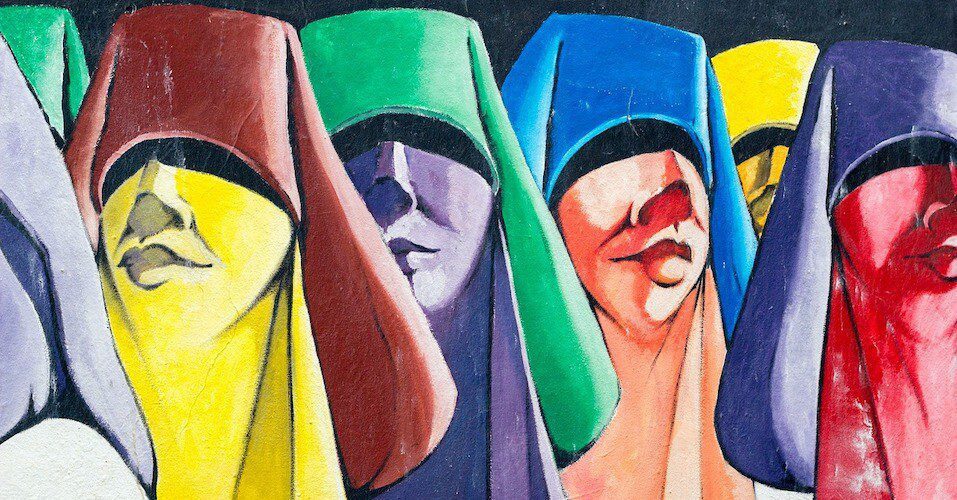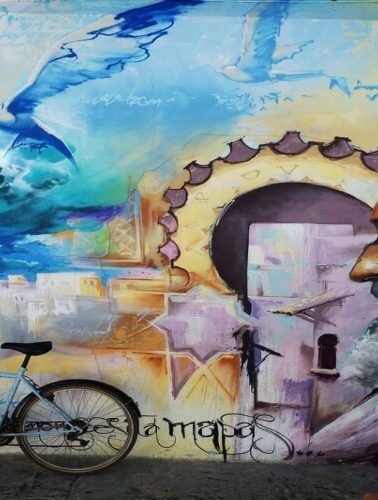Asilah
A 46 quilômetros ao sul de Tânger e a 110 quilômetros de Ceuta, fica uma pequena cidade marroquina que recentemente se tornou um destino turístico na costa norte de Marrocos: Asilah, uma exibição de casas brancas que contrastam com o azul do Atlântico e ruas que convidam você a se perder em um mundo de brilho e cor.
Asilah e seu valor histórico

Como muitos outros enclaves da costa marroquina, Asilah foi visitada por gregos e fenícios que deixaram evidências de sua presença, como Zilil, que data do século II a.C. Mais tarde, o lugar foi ocupado pelos cartagineses e no século 1 a.C., foi ocupada pelo Império Romano, que o nomeou “Colonia Augusti Iulia Constantia Zilil” (Augusta Zilil). Durante séculos, os romanos ocuparam a cidade até que ela foi conquistada novamente pelos árabes em 712, dando origem a uma nova era de ouro, na qual Asilah se envolveu no encanto pelo qual é famosa hoje. Comerciantes espanhóis, árabes e portugueses consideraram Asilah, no norte de Marrocos, um local estratégico para o comércio.
A febre do ouro no Saara levou Portugal a tomar a cidade em 1471, apenas para abandoná-la quase um século depois. Durante esse período, os portugueses construíram muralhas que fortificaram Asilah, que mais tarde se tornaram uma de suas principais atrações turísticas.
Após várias tentativas de reconquista, a Espanha se apropriou da área após suas alianças com Portugal, e a tornou parte do protetorado espanhol até 1956, apesar dos muitos ataques de várias dinastias marroquinas. Hoje, Asilah apresenta todo o seu legado histórico e é uma das cidades mais pitorescas de Marrocos.
A Medina de Asilah

A Medina de Asilah é caracterizada pela luminosidade do céu e pelo som constante do mar que pode ser ouvido nas ruas. Essas ruas brilhantes são conhecidas como “Lanternas de Asilah” e sua pavimentação é obra de artistas locais. As casas são brancas, adornadas com pinturas murais de artistas visitantes. Alguns estão sendo reabilitados com um belo design andaluz, misturando branco com azul índigo. As pequenas mesquitas de Asilah são pintadas de branco. As muralhas que circundam a cidade antiga foram construídas por Alfonso V de Portugal no século XV. Três portas de entrada se abrem para a Medina, chamadas:
- Bab Homaror ou Puerta Tierra, decorado com o brasão de armas do rei de Portugal, que hoje é quase apagado pela passagem do tempo.
- Bab el Baharor ou Puerta del Mar, ao lado da torre portuguesa quadrada com vista para toda a cidade.
- Bab el Kasbahin, na zona norte, cercada por jardins, em frente ao cemitério muçulmano.

Dentro do recinto, há um labirinto de becos que correm entre as casas brancas, que contrastam as persianas e portas verdes e azuis. Ao entrar no Bab el Kasbah, você percorrerá a Grande Mesquita branca imaculada ou a Torre El Kamra, uma estrutura icônica com 50 metros de altura em Asilah. À sua frente, o Centro Hassan II, com suas exposições e eventos internacionais, é o epicentro cultural de uma cidade que transborda cor e criatividade.
Ao passear pela Medina, você encontra o charmoso Ib Khaldun Square, ideal para vaguear por pequenos mercados, como os bazares Nashia ou Les Amis, onde é vendida uma variedade de produtos: de lanternas a nozes e doces marroquinos. A atmosfera é caracterizada pelos sabores provenientes dos terraços, salões de chá e restaurantes. Aqui, você pode desfrutar pacificamente de um chá moorish fresco. Uma das atividades famosas é escalar uma das seções da antiga muralha portuguesa: o Borj Al Kamra, que oferece algumas das melhores vistas da cidade: uma paisagem de cânions antigos que se juntam ao Atlântico.

Ao se perder nas ruas da Medina de Asilah, você verá arcos protegendo alguns trechos e fachadas cujas cores se fundem que lhe dão uma sensação de paz. O cemitério e o mausoléu de Sidi Ahmed El Mansur é um lugar calmo, localizado a sudoeste da Medina, onde está enterrado o líder saadiano, que reconquistou a cidade depois de lutar na Batalha dos Três Reis, em 1578. Um dos melhores pores do sol do custo marroquino pode ser visto do ponto de vista de Caraquia.
A Nova Cidade
A cidade nova – o centro da cidade – se estende ao norte da Medina, em frente ao porto de Asilah. Sua rua principal, Avenue Mohamed V, dá acesso à cidade a partir de Tânger.

Perto da cidade nova, você também pode encontrar várias praias bonitas: uma pequena praia ao lado do porto de “Cala de los Cañones”, ideal para dar um passeio relaxante e sentar-se para assistir ao pôr do sol. Se você procura praias maiores, o Asilah se estende até a vila de Briech, localizada a 10 quilômetros ao norte do centro da cidade de Asilah. A Praia das Cavernas (Las Cuevas) é a mais famosa e pode ser encontrada a 6 quilômetros ao sul do centro da cidade, destacando-se entre uma faixa de falésias e rochas. A praia de Sidi Mghait fica no final de uma rede de estradas não pavimentadas, recompensando aqueles que procuram as águas azuis e as areias douradas do Marrocos.
Ao visitar Tânger, se perder entre o charme de Asilah não precisa de demorar mais de um dia, e é o refúgio perfeito para descobrir a costa norte de Marrocos.
O Moussem Cultural de Asilah

O Moussem Cultural de Asilah realiza conferências, exposições e outros eventos culturais para o Festival Cultural durante o verão, em julho.
Todos os anos um país convidado é convidado a mostrar sua cultura por meio de conferências, exposições de arte, danças folclóricas, etc. Durante o festival, artistas internacionais vêm a Asilah para pintar as paredes das casas caiadas de branco da Medina.

